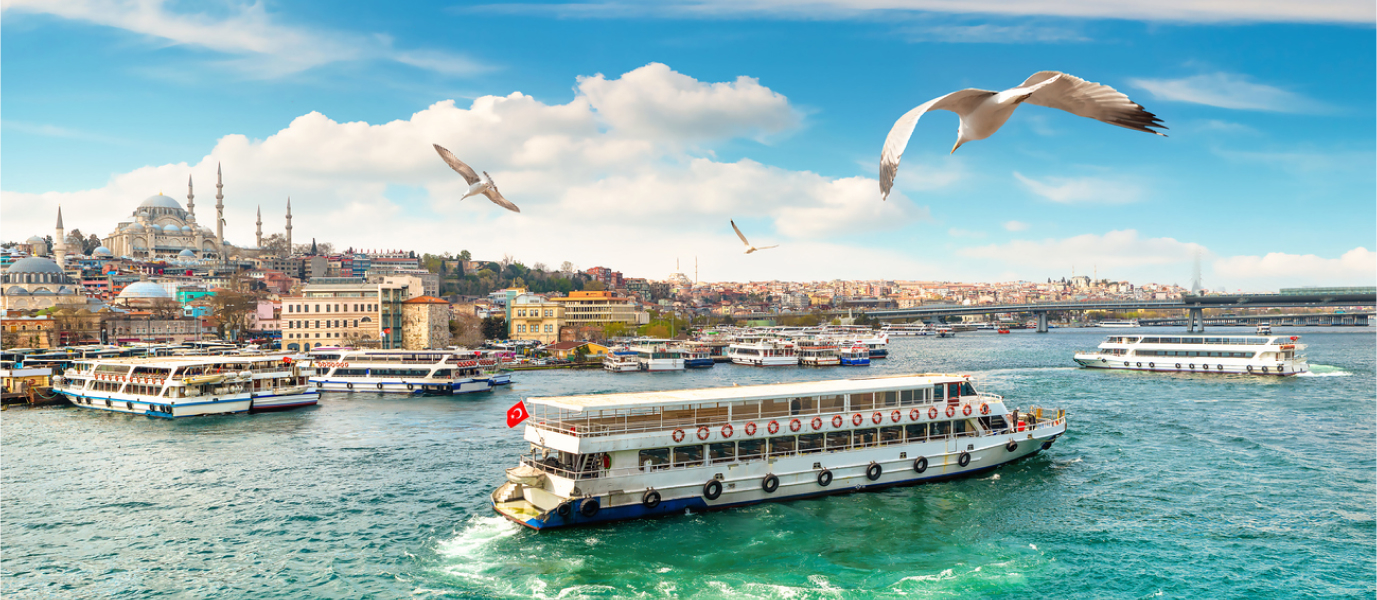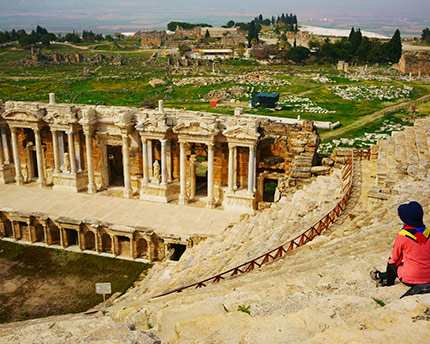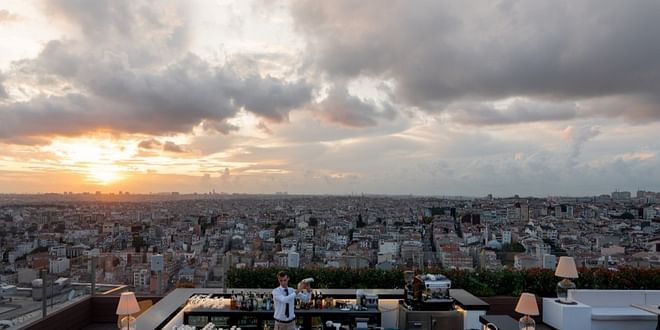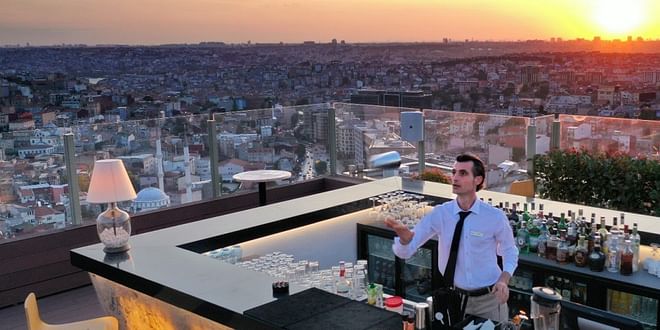An excursion to Bursa is an ideal day trip from Istanbul. Its proximity to the former Constantinople means it is very popular for tourists. This is not just because it is close by, but also as it was the capital of the Ottoman Empire for almost 30 years and has many appealing places to visit.
Bursa is known as Green Bursa, due to its variety of parks and green areas. It is a city which combines the beauty of its historical heritage with that of its natural setting. Apart from this, it enjoys the attractive dynamism found in large cities.
Indeed, Bursa is the fourth largest city in Turkey, with almost two million inhabitants. A large city with an economy based on the automotive industry (there are several car factories), fruit and vegetable growing, and a spa. It even snows there and a ski station is located nearby on Ulu Dag mountain.
History of Bursa, the former Turkish capital
Bursa is located in the extreme west of Turkey. It was key to its development, thanks to the Silk Road which joined China and Europe. Founded by the Macedonians in the sixth century BC, it had an important Roman influence, whose legacy can be seen today in its hot springs, ruins and other items found in archaeological digs.
The Ottoman Empire on arriving in the fourteenth century made Bursa its capital between 1326 and 1365, which lead to important commercial and industrial development in the city. Since then, Bursa was always a hub for other places in the Empire.
What to see in Bursa
Bursa was registered in the 2014 Unesco World Heritage list together with the nearby town of Cumalikizik, as being places where the Ottoman Empire was born. As such, it has important historical heritage which attracts thousands of visitors every year.
The Great Mosque or Ulu Cami
The Great Mosque of Bursa (Ulu Cami, in Turkish) is the main monument in the city. It was built between 1396 and 1399 and is the largest in the city with 20 domes and two minarets. One of the features of the Great Mosque is the Islamic calligraphy covering many of the walls and inner column. With 192 inscriptions, it is one of the greatest examples of this in the world. Also see the inner fountain where the faithful perform ritual ablutions before prayers.
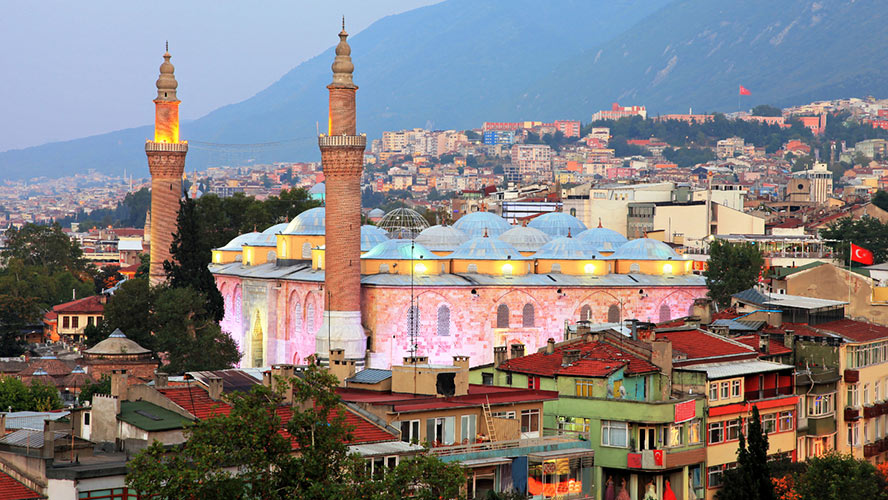
The Green Mausoleum
Located together with the Green Mosque is the Green Mausoleum which houses the tombs of the sultan Mehmet I and his family. Once again, green and blue hues colour this beautiful fifteenth century monument, built with a hexagonal plan and a hemi-spherical dome. Inside, the sarcophagus of what was the fifth sultan of the Ottoman Empire is clad with yellow, blue and white tiles.
The Madrasa
Rounding off this complex of the Green Mosque and the Green Mausoleum is the Muradiye Madrasa, which acted as an educational and medical institution. The Madrasa was finished in 1426 and is a beautiful, brick building with a large entrance arch and a roof with four domes.
The Silk Market
Another landmark in Bursa is the Bedestan, the building which houses the Silk Market. Built in the fourteenth century and rebuilt in the nineteenth century it has numerous stalls selling jewellery, spices and textiles. As its name indicates, silk is still one of the main draws of the market, after centuries of being the main product traded in Bursa. Although it is smaller than the Grand Bazaar in Istanbul, exploring the Silk Market is very interesting to experience local people and get to know the broad range of products in the region.
Mt Ulu Dag
As we said before, Bursa has the sobriquet Green Bursa on account of the numerous parks surrounding it. One of the best known natural areas is Mt Ulu Dag, a mountain close to the city which reaches a height of 2,500 metres. Ulu Dag is the former Mysian Olympus mountain, the province which occupied this territory in antiquity. Today, it makes up a national park and houses the oldest ski station in Turkey which has over 20 slopes.
Apart from these monuments, Bursa is known for its hot springs, such as Yeni Kaplica, built in 1552, or Eski Kaplica, which is of Roman origin and restored centuries afterwards.































































